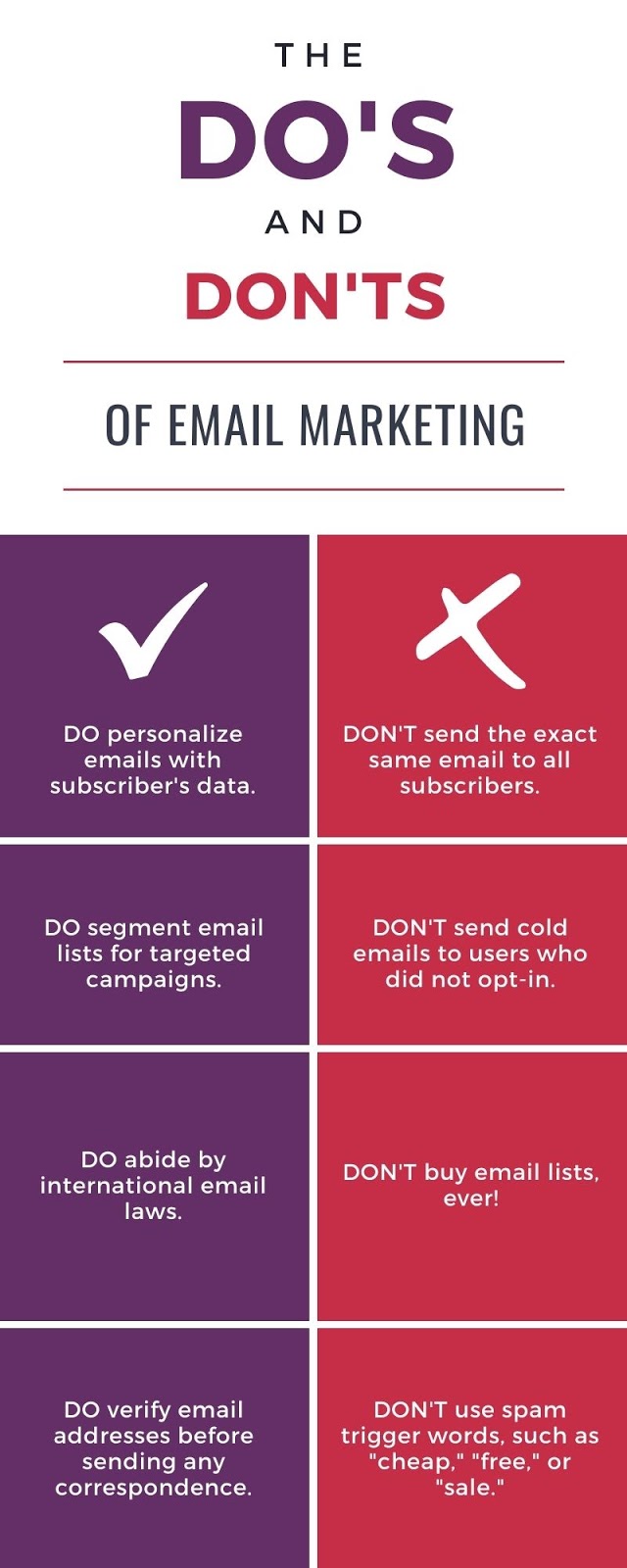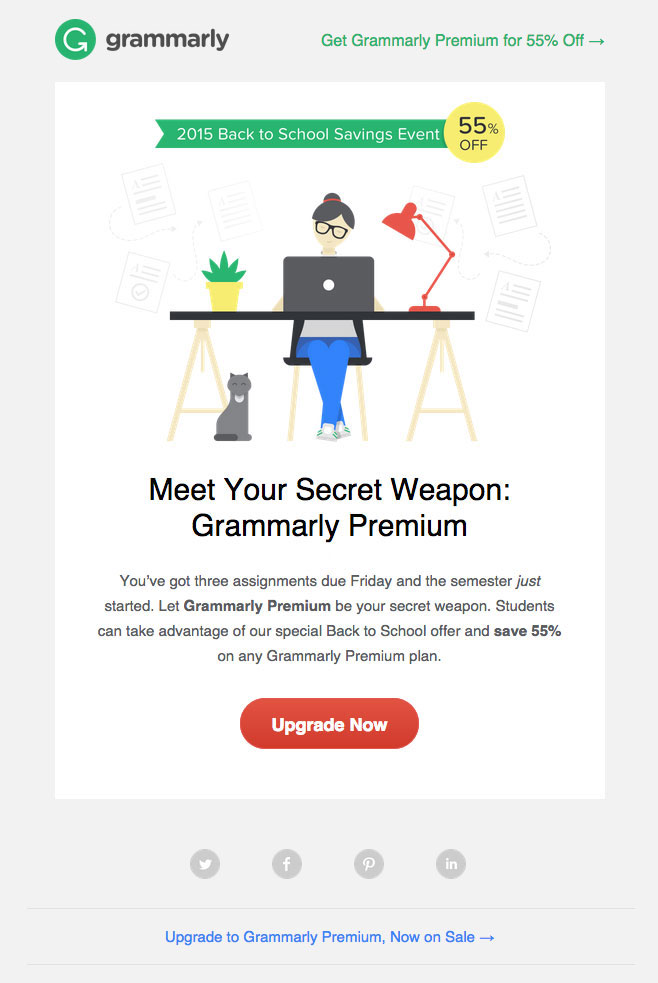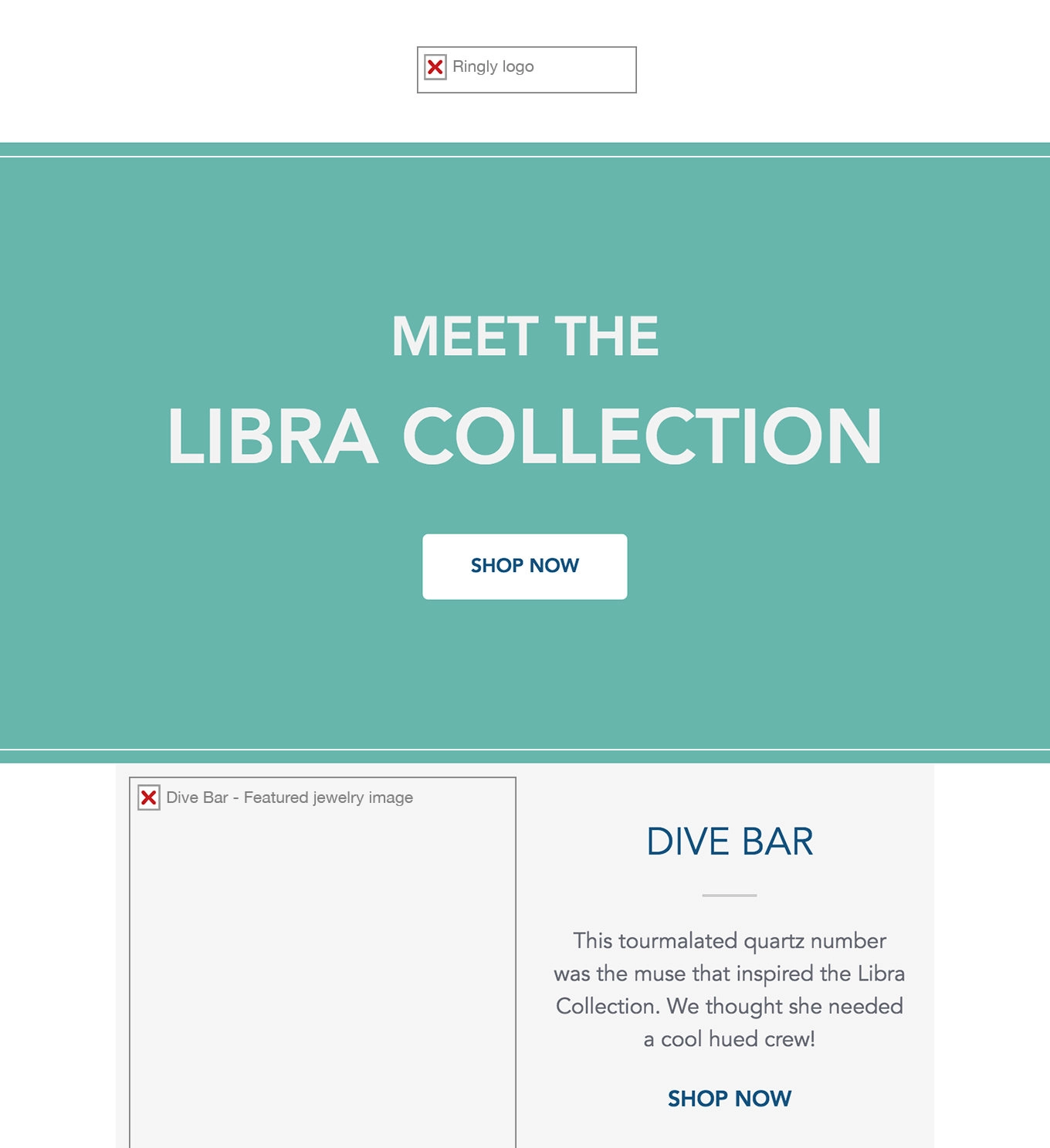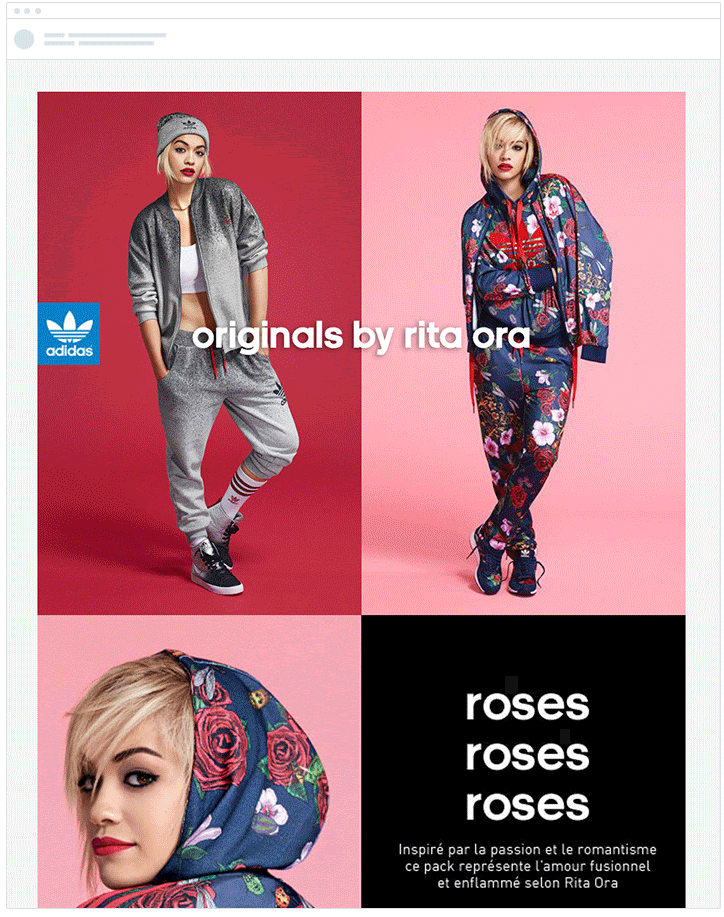By now, you’re probably aware that email marketing is a crucial part of any content strategy.
Whether you’re an ecommerce brand or a SaaS company, you are likely employing email marketing to some capacity.
The question is: are you using email marketing effectively?
Download Free White Paper Now: A Beginner’s Guide to Email Marketing
Mirabel’s Marketing Manager has compiled a list of the best email marketing practices to ensure that you’re deploying top-tier campaigns.


What does effective email marketing look like?
First things first, you need to make sure that your email marketing campaign has clear and measurable goals.
Is your intention to nurture leads and eventually move them through your sales pipeline?
Or, are you trying to build brand awareness through engaging and informative content?
Your campaign’s success will be measured differently depending on its goals.
While a content download might be a huge win for a strategy focused on building awareness, a strategy focused on generating leads may not see a content download as significant.




Some metrics are measures of success for any campaign. These include:
- Open rates range depending on your industry. Generally, you want yours to fall between 15-28%.
- Click through rates (CTRs) average at around 2.62%, with industries like Media and Publishing reaching nearly 5% CTRs.
- Bounce rates are the percentage of users who click away from your content after only viewing one page. They are categorized into soft bounces (bounces that are due to a temporary issue with deliverability) and hard bounces (which are usually due to a permanent issue, like an inactive account).
On average, you should aim for a soft bounce rate of .58% or lower, and a hard bounce rate below .4%. - Unsubscribe rates reflect the amount of subscribers that opted out of your campaigns after receiving an email.
High unsubscribe rates can negatively impact your sender reputation, so it is important to make sure it stays at or below the .5% average.
- Spam complaints are a huge blow to your email marketing sender reputation. This number will ideally be zero, but you definitely need to make sure that it stays below .01% (one report for every 1,000 sent messages).
Email Marketing Pro-Tip: Make sure that your unsubscribe or opt-out button is clearly visible in all of your emails. If users can’t easily locate it, they may resort to marking your email as spam.
High unsubscribe rates or spam report counts are causes for alarm. They indicate that either your email list is not segmented enough or your emails are not relevant to your audience.
Let’s take a look at some design best practices to ensure that your emails are retaining subscribers (not losing them).
Email marketing design best practices
You now know what an effective email campaign looks like in terms of the numbers.
But, what should your emails actually look like?
Again, that’ll depend on your industry and the goal of your campaign.
While ecommerce brands may take a more colorful, convivial approach to their emails, SaaS companies may choose to take a minimalist, informative one.
When designing your campaigns, be sure to take your audience into consideration. What is the best way to communicate your message?
No matter the industry, message, or goal, however, you should keep these email design best practices in mind:
- Format your emails “using a logical hierarchy with large headlines and images focusing the attention. Use layout to break up space and help create chunks of content.”
There are various formats that can be used to execute visually appealing email campaigns. Some popular ones include the inverted pyramid, zig-zag, and one-column styles.
Additionally, MailUp (www.mailup.com) recommends that emails include between 75-100 words, complemented by one to three visuals.
- Use the correct email dimensions. You may have heard that emails should be about 600 pixels in width.
“Over a decade ago, Microsoft Outlook was the king of the email client hill and the average desktop monitor was 1024px… It was from these constraints, that the email width rule of 600 pixels was born and since then, it has largely prospered.”
Today, the majority of users are viewing emails on their mobile devices.
Additionally, your subscribers are probably viewing your emails in different browsers, which render sizes according to their interface.
If the user is using Gmail, for example, they will not see an email’s background color if it exceeds 640px.
Email sizes average at around 640-700px. But, there is no true standard. Just make sure that your email renders properly on all devices and browsers.
- Use optimal image size and quality. Your images should be about two times the size of your email. So, if your email is between 600-640px, your images should be between 1200-1280px.
Again, you want to make sure that users get clear, crisp images no matter what device or browser they’re using.
You also want to make sure that you’re using images that are on brand. Stock photos that are too general may alienate your user.
If you don’t have the budget to take your own pictures, make sure that you’re curating high quality images.
Email Marketing Pro-Tip: Using alt text on your images will be helpful in the event that it isn’t properly loading on a subscriber’s browser.


- Use appropriate CTAs. CTAs should be actionable and lead your user to more relevant content, or a purchase page, depending on the goal of your campaign.
- Make your opt-out option easy to find. As mentioned, a user may mark your email as spam if they cannot easily find your “unsubscribe” link.
Not only is this inconvenient for the user, it is also in violation of the CAN-Spam Act, which requires an opt-out link and for you to:
- Include your company’s address in the footer. This lets your user know that you are a viable business and that your email is not spam.
- Optimize your subject line. Though it is not technically a design element, your subject line is the first part of your email that a user sees. It should be short, direct, and avoid words with strong sales connotations.
Using proper language will not only entice subscribers to open your emails, it will also prevent you from being marked as spam by email providers.
Once again, personalizing this element will encourage higher engagement from your audience. Do this by including the user’s name, or content that might interest them based on their interactions with your site.
Do’s and Don’ts of email marketing
Before you go ahead and deploy your campaign, let’s discuss the do’s and don’ts of email marketing:
- Do personalize your emails. We are slowly learning that email marketing is not one-size fits all. The more you tailor your campaigns to a specific user’s interests, the more likely they are to open and engage with your emails (26% more likely, to be exact).
You can include user-specific language in your subject line, preview text, or email copy.
Additionally, using dynamic content (content that changes based on the user viewing it) can be an effective way to personalize a campaign to a specific person or user.
For example, Adidas (www.adidas.com) uses dynamic content to adjust the images in this email based on the user’s gender:


- Don’t send the same email to every subscriber. On that same note, the more generic your email is, the less likely it is to connect with the user.
Unless it is a pertinent company update, your emails should vary depending on the segment being targeted.
- Do send targeted email marketing campaigns. Again, the more precise you are in targeting your audience, the more engagement you will drive.
One of the best ways to do this is by segmenting your email lists. Beyond customizing an email with the user’s name, you can target users by their demographics, job titles, or even by their browsing or purchase histories.
Email Marketing Pro-Tip: Using an email automation software can make segmentation a lot easier. You will be able to incorporate user-specific data into your campaigns, and create workflows to target users based on their activity.
- Don’t do cold email marketing. It’s already tricky enough to keep users who have opted-in to your email list engaged. Don’t make it harder on yourself by trying to engage with users who have no shown interest in your campaigns.
Not to mention, cold-emailing is a pretty sure-fire way of ending up in someone’s spam folder. - Do abide by international email marketing laws. Though it is technically not illegal to send unsolicited emails in the United States, countries like Australia, Spain, the United Kingdom, and France require user consent.
So, if you’re sending international campaigns, it is especially important to make sure that your subscribers have willingly opted-in. - Don’t buy lists for email marketing. This is a HUGE no because it is impossible to know where your email list came from.
If the emails were acquired through illicit means, such as web harvesting, you could be facing “penalties of up to $16,000 for each separate email you send.”
- Do check email validity. This will ensure that you are only delivering to valid, active email addresses, which will increase your deliverability and open rates.
You should also consistently scrub your email lists to make sure they are free of invalid and inactive addresses. - Don’t use overly salesy language. All caps, unnecessary punctuation, and trigger words like “cheap”, “sale”, “free”, and even “price” are all red flags to email providers that may have your emails marked as spam.
Some trigger words are unavoidable, and that’s okay! Email filters are sophisticated enough to consider the context of your email before banishing it to the spam folder. But, use these words sparingly. - Do A/B test. This means sending out two versions of the same campaign and identifying which one your audience responds best to. This will allow you to hone your email marketing strategy.
When A/B testing, change one variable at a time so that you can keep track of exactly what is having a positive (or negative) effect on users.
Best practices for deploying email campaigns
When it comes time to deploy your email marketing campaigns, there are a few elements to keep in mind.
Timing is among the most important of those elements.
The best day of the week to deploy an email campaign is between Tuesday and Thursday.
Email Marketing Pro-Tip: If you have to deploy an email campaign on a Monday, make sure it’s scheduled for 9 a.m. so it’s at the top of everyone’s crowded inboxes.
As far as the ideal time to send an email, it will depend on your industry.
In B2B marketing, the best time to send marketing emails is “between 8 and 10 a.m… when people first log in for the day. Between 12 and 2 p.m. is also recommended, as this is when people take and return from lunch breaks.”
In B2C marketing, the recommended time is between 6 and 9 p.m., as this is when most people are off from work and have time to check their personal emails.
The importance of timing is two-fold.
Not only should you pay special attention to the time and day you send your campaigns, you also want to make sure to send emails with the proper frequency and on the right occasions.
How often should you send marketing emails to your subscribers? Zettasphere (www.zettasphere.com) suggests approximately 6.21 emails per week.
What about the proper occasion to send the email?
Well for one, you want to be sure to send an email as soon as the user signs up, to prepare them for the content to come. Your first correspondence should be lighthearted. You may even choose to include a promotion, such as a 10% discount on the user’s first purchase, with your welcome email.
If you wait too long to reach out to a user, they may forget that they’ve subscribed to your list. They may unsubscribe or mark you as spam when the emails do start coming in.
You may also consider sending an email to a user who visited your site recently. You can personalize this by including items that a user viewed on your site, or content related to a blog they were reading.
Conversely, a user that hasn’t been engaging with your emails or site may also be due for an email, one that inspires them to reconnect with your brand. These are both examples of dynamic content (more on that shortly).
Email Marketing Pro-Tip: A marketing automation tool can aid this element of your campaigns. You can set up workflows that deploy emails when a user sets off certain triggers, such as leaving an empty cart behind or signing up for your newsletter.
Right up there with timing is the quality of your email marketing campaigns.
No matter what your goal is, the best way to see tangible results is to provide users with engaging, entertaining, or informative content.
You must also ensure that your content is relevant to the user and satisfies a need. This requires thoughtful consideration of what your subscribers might need.
Are they in need of informative content to help them in their marketing efforts?
Do they need entertaining content to encourage them to browse your blog?
Or are they perhaps in need of your product?
The need of the user will affect how you should market to them, and thus the types of emails you should send them.
We’ve talked a bit about personalizing emails using dynamic content and segmentation. That’s because personalized emails produce six times higher transaction rates, and segmented campaigns drive a 760% increase in revenue.
These two strategies will ensure that your quality content is engaging the right audience.
Conclusion
If you’re ready to take advantage of the 4,200% ROI that comes with effective email marketing, look no further.
Click below to download our Beginner’s Guide to Email Marketing and launch your best email marketing campaigns yet.
SEE FOR YOURSELF
Watch an overview to learn how B2B marketing automation by Mirabel Technologies can help you increase traffic, optimize your funnel, drive more leads, improve conversions, and boost ROI — at a price you can afford!

